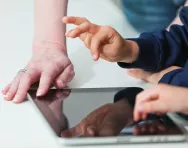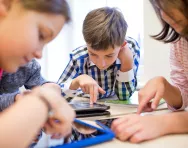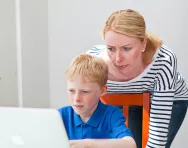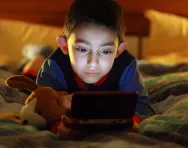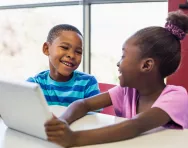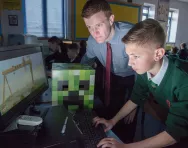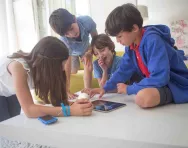TheSchoolRun.com closure date
As we informed you a few months ago, TheSchoolRun has had to make the difficult decision to close due to financial pressures and the company has now ceased trading. We had hoped to keep our content available through a partnership with another educational provider, but this provider has since withdrawn from the agreement.
As a result, we now have to permanently close TheSchoolRun.com. However, to give subscribers time to download any content they’d like to keep, we will keep the website open until 31st July 2025. After this date, the site will be taken down and there will be no further access to any resources. We strongly encourage you to download and save any resources you think you may want to use in the future.
In particular, we suggest downloading:
- Learning packs
- All the worksheets from the 11+ programme, if you are following this with your child
- Complete Learning Journey programmes (the packs below include all 40 worksheets for each programme)
You should already have received 16 primary school eBooks (worth £108.84) to download and keep. If you haven’t received these, please contact us at [email protected] before 31st July 2025, and we will send them to you.
We are very sorry that there is no way to continue offering access to resources and sincerely apologise for the inconvenience caused.
Positive screen time for children
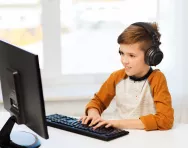
As parents, we’re conditioned to think that screen time for children is a bad thing. News reports have linked it to all manner of health and behavioural issues, and many experts believe that it should be strictly limited – and not allowed at all for younger children.
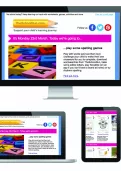

Boost Your Child's English & Maths!
- Weekly programme for each school year
- Worksheets sent direct to your inbox
- Keeps your child's learning on track
But computers are an integral part of everyone’s life, and banning all screen time just isn’t realistic. So how can we make it a positive experience and set appropriate screen time rules for our children?
Why worry about screen time?
We all know how frustrating it is when we’re trying to get our child’s attention, but they’re so engrossed in their computer game that they don’t even hear us. ‘It can be a very passive activity, where children become completely engrossed and detached from all communication, interaction and participation in the family,’ says Bethany Koby, CEO and co-founder of Technology Will Save Us. ‘It removes them from reality, and doesn’t get their brain working.’
It’s this sort of passiveness that we see when our kids are glued to YouTube videos.
Research has also shown that screen time can affect children’s sleep, increase the risk of concentration problems, anxiety and depression, and lead to obesity because they do less physical exercise.
Making screen time positive
But screen time isn’t all bad, and the right sort of on-screen activities can be a positive experience for your child, giving their learning a boost and helping them develop new skills.
‘There’s a lot of really wonderful educational content online that encourages children to participate rather than just being a passive observer,’ Bethany says. ‘Many games and apps have been designed specifically to encourage thinking and questioning.’ Games such as Minecraft, for example, are great for helping children engage and interact with what they’re viewing.
Another benefit of the internet is that it helps children develop research skills that are essential for their learning as they head into Key Stage 2 and beyond. ‘Learning how to use search engines effectively is a valuable skill, teaching children to explore and navigate online, analyse the reliability of what they find, and get deeper into the subject they’re researching,’ Bethany says.
There are also huge opportunities for children to develop their computer coding (programming) skills – an important part of the national curriculum. Whereas in the past, children were taught simply to be operators of computers who could use programmes like Microsoft Word, now, they’re taught to be creators. ‘When a screen is used as a tool to create something new, it’s really exciting,’ Bethany says.
As children become more adept at using technology, it builds their self-esteem. ‘When they know what they’re doing, they have the confidence to share what they’ve learnt, and it makes them feel more capable,’ Bethany adds.
Channelling children into these sorts of activities, where they’re engaging and creating rather than passively observing, is one of the keys to making screen time positive – but it’s also important that they have opportunities to interact around what they’re doing on screen. Often, we use screens as babysitters, or zone out when our kids are wittering about their latest redstone creation, but instead, we should engage with them and their screen time.
‘Screen time is just another of those moments in life where you can engage with your child, and find out what they’re exploring and learning,’ Bethany says. Spending some time watching them play a game and letting them explain what they’re doing, or helping them research their school project online, will help them to engage more with you and their screen use.
Positive ways for children to use screens
There are lots of positive ways for children to use their screen time as active participants, rather than passive observers. These include:
Asking a big question such as ‘What would the world be like if there were no trees?’ and getting your child to research it.
Getting to grips with coding either using an app like Scratch Jr or a device like a Raspberry Pi to create computer games, make music and more.
Using educational apps to master skills such as spellings and times tables.
Writing a blog about their daily life.
Using photo editing software to edit pictures they’ve taken themselves.
Reading books on a screen – it’s just as valid an activity as reading printed books, and there are even some advantages: for example, most e-reader apps have an inbuilt dictionary so children can look up unfamiliar words.
Using YouTube not to watch endless videos from their favourite vloggers, but to learn a new skill such as knitting, drawing cartoons or origami.
Of course, not all screen time has to be 100 per cent educational. ‘There’s definitely a place for the sort of content that lets children be passive; it’s relaxing and lets them escape from reality,’ Bethany says. ‘But this sort of screen time is best in small quantities.’ So if you can encourage your child into more active and engaged screen time alongside their YouTube videos and Fortnite, you’ll be helping them give their brain a workout and learn new skills that could one day pave the way to a career in technology.
